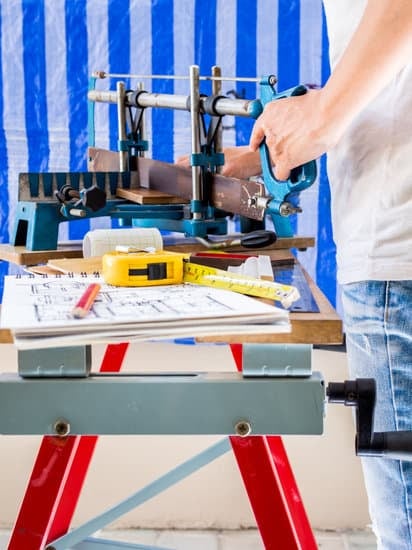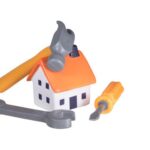Are you wondering how to find a home improvement loan? Whether you want to renovate your kitchen, add a new bathroom, or upgrade your HVAC system, a home improvement loan can help make your dreams a reality. But with so many options available, it can be overwhelming to know where to start. In this article, we will guide you through the process of finding the right home improvement loan for your needs.
When it comes to home improvement loans, there are various options available. From personal loans to home equity loans and lines of credit, understanding the different types of loans is essential in making an informed decision. In this section, we will explore the different options available and discuss their pros and cons.
Assessing your home improvement needs is an important step in the process. Before seeking a loan, it’s crucial to determine the cost and scope of your project. By understanding how much funding you require and what areas of your home need improvement, you can effectively narrow down the loan options that will best suit your needs. We’ll discuss how to evaluate your project and align it with potential loan options in the following sections.
Assessing Your Home Improvement Needs
When it comes to embarking on a home improvement project, one of the first steps you need to take is assessing your needs. This involves determining the cost and scope of the project, which will ultimately guide you in finding the right home improvement loan.
Start by creating a detailed list of all the improvements you want to make, such as renovating the kitchen, adding a new bathroom, or installing energy-efficient windows. This will help you understand the full scope of the project and provide a clearer picture of how much financing you will need.
Once you have a clear idea of what you want to accomplish with your home improvement project, the next step is to estimate the total cost. Research and gather quotes from contractors and suppliers to get a better understanding of the expenses involved.
It’s important to factor in both materials and labor costs when making your calculations. By having a realistic cost estimate in mind, you’ll be better prepared when it comes time to seek out a home improvement loan.
Consider creating a budget that outlines your planned expenditures for each aspect of your project. Determine how much you can comfortably afford to pay out-of-pocket and how much financing you will need. This will not only help guide your decision-making process when selecting a loan but also demonstrate responsible financial planning to potential lenders.
| Aspect | Recommendation |
|---|---|
| Determining Project Scope | Create a detailed list of all planned improvements |
| Estimating Total Cost | Gather quotes from contractors and suppliers for accurate cost estimations |
| Creating Budget | Determine out-of-pocket affordability and financing needs |
Researching Lenders
When it comes to finding a home improvement loan, one of the most crucial steps is researching and finding the right lender for your needs. There are a variety of financial institutions that offer home improvement loans, including traditional banks, credit unions, online lenders, and specialized home improvement loan providers. Here are some important factors to consider when researching lenders:
- Interest Rates: Different lenders offer different interest rates on home improvement loans. It’s important to compare rates from multiple lenders to ensure you’re getting the best deal.
- Loan Terms: The terms of the loan, including the repayment period and any potential fees or penalties, can vary widely between lenders.
- Reputation and Customer Service: Researching customer reviews and ratings can give you insight into the reputation and customer service of potential lenders.
Another important aspect to consider when researching lenders is whether they offer pre-qualification options. Pre-qualification can give you an idea of how much you may be able to borrow before officially applying for a loan. This can help you narrow down your choices and focus on the lenders who are most likely to approve your application.
Finally, don’t forget to consider any specific requirements or qualifications that each lender may have for their home improvement loans. Some lenders may have minimum credit score requirements or other eligibility criteria that you’ll need to meet in order to qualify for a loan.
For more information on how borrowers find a home improvement loan visit our website today.
Comparing Loan Rates and Terms
When looking for a home improvement loan, it’s essential to compare loan rates and terms to ensure you’re getting the best option available. Here are some steps on how to find the right loan for your needs:
1. Research Online: Start by researching online and comparing different lenders’ offerings. Look at their interest rates, loan terms, and any additional fees they may charge. Websites like Bankrate, LendingTree, or NerdWallet can be helpful resources for comparing loan options.
2. Check with Local Banks and Credit Unions: Visit local banks and credit unions in your area to inquire about their home improvement loan offerings. Sometimes, these institutions may offer more favorable terms compared to larger financial institutions.
3. Consider Government Programs: Depending on the nature of your home improvement project, you may qualify for government programs that offer low-interest loans or grants for specific renovations. Check with the U.S. Department of Housing and Urban Development (HUD) or your state housing agency for potential options.
It’s important to remember that while comparing loan rates and terms is crucial, it’s equally important to consider the overall reputation and customer service of the lender. Taking the time to research and compare options will help you find a home improvement loan that best fits your needs and financial situation.
Understanding the Approval Process
When applying for a home improvement loan, it’s important to understand the approval process and what lenders look for in an applicant. This can help you prepare and increase your chances of securing the loan you need for your home renovation project.
Credit Score and History
One of the first things that lenders look at when considering a home improvement loan application is the applicant’s credit score and credit history. A higher credit score demonstrates financial responsibility and makes you a more attractive borrower. Lenders typically prefer applicants with a credit score of 650 or higher, so it’s important to check your credit report before applying for a loan.
Income and Debt-to-Income Ratio
Lenders will also assess your income and debt-to-income ratio to determine if you have the financial means to repay the loan. Your income stability and employment history are also factors that lenders consider when evaluating your ability to make timely payments on the loan.
Collateral or Equity
Using your home as collateral for a home improvement loan is common, especially for larger loan amounts. Lenders may require an appraisal of your property to determine its current value and equity. The amount of equity you have in your home can affect the terms and interest rates offered to you.
By understanding these key factors that lenders look for in a home improvement loan applicant, you can better prepare yourself for the application process. Taking steps to improve your credit score, manage your debt-to-income ratio, and gather necessary documentation can strengthen your position as a borrower, increasing your chances of securing favorable loan terms.
Gathering Required Documentation
When applying for a home improvement loan, it is important to gather all the required documentation to ensure a smooth application process. The first step in organizing your financial and personal information is to gather proof of income, such as pay stubs, tax returns, and any additional sources of income. Lenders will use this information to assess your ability to repay the loan.
In addition to proof of income, you will also need to gather documentation related to the home improvement project itself. This may include estimates from contractors, detailed project plans, and any necessary permits or licenses. Having this information organized and readily available will demonstrate to lenders that you have thoroughly researched and planned for the project.
Furthermore, it is essential to gather personal identification documents such as a driver’s license or passport, as well as proof of homeownership. These documents will help verify your identity and ownership of the property for which you are seeking the home improvement loan.
As you gather these documents, it is important to keep them organized and easily accessible. Creating a file or digital folder specifically for your home improvement loan application can help streamline the process and ensure that you have all the necessary information at your fingertips when it comes time to apply for the loan.
| Documentation | Details |
|---|---|
| Proof of Income | Pay stubs, tax returns |
| Project Documentation | Estimates from contractors, project plans, permits/licenses |
| Personal Identification | Driver’s license/passport, proof of homeownership |
Applying for the Loan
When it comes to applying for a home improvement loan, navigating the application process and meeting the requirements can seem like a daunting task. However, with the right knowledge and preparation, you can make this process much smoother.
Understanding Loan Application Requirements
Before diving into the application process, it’s important to understand the basic requirements that most lenders will have. These may include a good credit score, stable income, and a low debt-to-income ratio. Some lenders may also require specific documentation related to your home improvement project, such as cost estimates from contractors or detailed plans for the renovation.
Preparing Your Application
Once you have an understanding of the general requirements, it’s time to start preparing your application. This may involve gathering financial documents such as tax returns, bank statements, and proof of income. Additionally, you’ll need to provide details about your home improvement project, including estimates of the costs involved and any contractor quotes you’ve received. Take the time to organize all of these documents neatly to present a strong application to potential lenders.
Navigating the Application Process
After gathering all necessary documents and understanding the requirements of lenders, it’s time to actually navigate the application process. This may involve filling out online forms or meeting with loan officers in person. Be prepared to provide detailed information about your personal finances as well as your home improvement project.
It’s also a good idea to inquire about any potential fees or closing costs associated with the loan at this stage. By being thorough in your application process, you increase your chances of securing a favorable home improvement loan.
By understanding how to navigate the application process and meeting all necessary requirements for a home improvement loan, you can increase your chances of securing funding for your project. With careful preparation and attention to detail, you can streamline this process and find a loan that meets your needs for upgrading your home.
Managing Your Home Improvement Loan
After securing a home improvement loan, it is essential to manage it properly to ensure that the project runs smoothly and that you are able to make timely payments. Making regular and on-time payments is crucial to maintaining a good credit score and avoiding late fees or penalties.
One way to ensure this is by setting up automatic payments through your bank or financial institution. By doing so, you can avoid missing any due dates and focus on completing your home improvement project without having to worry about making manual payments each month.
Financial planning for the future is also important when managing a home improvement loan. It is essential to allocate funds for both the repayment of the loan and for any unexpected expenses that may arise during or after the completion of your project. Creating a budget that includes monthly loan payments as well as potential maintenance costs can help you stay on top of your finances and maintain control over your overall financial health.
Moreover, regularly reviewing your loan terms, interest rates, and other financial details of your home improvement loan can also aid in better managing it over time. Keeping track of your progress in repaying the loan can help you strategize how best to utilize any additional resources available towards fulfilling outstanding balance thereby potentially lowering high interest costs.
By staying informed about the terms of your loan, you can adopt proactive measures if needed for any changes based on varying circumstances ensuring successful financial management over time.
Finding a home improvement loan may seem like a challenging endeavor at first but understanding all aspects involved in managing it can provide a great sense of control over these types of loans enabling successful project completion while helping keep personal finances manageable as well.
Common Mistakes to Avoid
In conclusion, understanding the process of finding a home improvement loan is crucial for homeowners looking to undertake renovation or remodeling projects. Assessing your needs and researching lenders are the first steps in this process. By determining the cost and scope of your project, you can then begin to explore the different options available from financial institutions.
It is important to compare loan rates and terms to ensure that you are getting the best deal possible. Once you have selected a lender, understanding the approval process and gathering required documentation will help streamline your application.
Applying for a home improvement loan can be a daunting task, but with proper planning and organization, it is manageable. Navigating the application process and meeting requirements demonstrates your commitment as a borrower. Once you have secured the loan, managing it effectively by making timely payments and financial planning for future expenses is essential. Finally, being aware of common mistakes to avoid when seeking a home improvement loan will help you steer clear of potential pitfalls.
Overall, finding a home improvement loan requires diligence, research, and an understanding of the lending process. By following these steps and being cautious about potential mistakes, homeowners can successfully secure financing for their renovation projects. Whether it’s upgrading kitchens or bathrooms or adding additions to their homes, with the right approach and thorough knowledge on how to find a home improvement loan, homeowners can achieve their desired improvements while avoiding unnecessary pitfalls.
Frequently Asked Questions
What Credit Score Is Needed for a Home Improvement Loan?
The credit score needed for a home improvement loan can vary depending on the lender. Generally, a score of 620 or higher is considered good for securing favorable terms. However, some lenders may require a higher score or accept lower scores with additional requirements.
Which Loan Is Best for Home Renovation?
The best loan for home renovation depends on individual circumstances. For major renovations, a home equity loan or line of credit may be the best option due to their lower interest rates and higher borrowing limits. For smaller projects, a personal loan could be sufficient.
What Is the Average Length of a Home Improvement Loan?
The average length of a home improvement loan typically ranges from 5 to 30 years. This can vary based on the type of loan, the amount borrowed, and the borrower’s creditworthiness.
Shorter loan terms may have higher monthly payments but save on interest in the long run, while longer terms offer lower monthly payments but result in more interest paid over time.

I’m thrilled to have you here as a part of the Remodeling Top community. This is where my journey as an architect and remodeling enthusiast intersects with your passion for transforming houses into dream homes.





